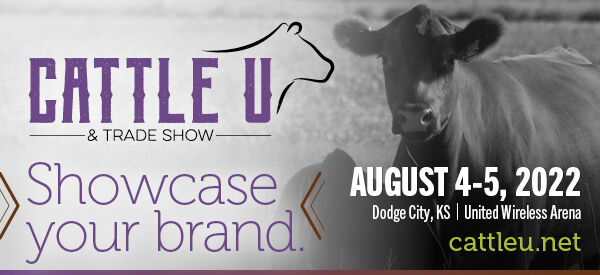Premiums for high-Choice and Prime cattle keep sending value signals, even if just word of mouth. If you’re a cow-calf producer, it may be hard to see where it adds value in your wallet.
Paul Dykstra, beef cattle specialist for the Certified Angus Beef brand, encounters that theme all across the country. At the recent Cattle Industry Convention and Tradeshow in San Antonio, he addressed the impact of premiums on cow-herd operators.
In a Learning Lounge session, Dykstra opened with CattleFax survey data showed 44% of cow-calf producers sell calves right off the cow.
“By doing so we are limiting our exposure to both the risk and the upside value potential in our calves,” he said. “Right or wrong, most of us are disengaging from that animal when we sell that product off the ranch.”
But those premiums and discounts for their later performance may have already affected your wallet, because the value-based market increasingly dominates feedyard sales to packers, according to CattleFax.
Dykstra said negotiated cash sales of finished cattle to packers has declined to near 20% as the rest sell on a formula, forward contract or grid basis. Even the negotiated cash sales include grading projections.
That’s mostly due to increasing demand for higher quality, highly marbled carcass since 2004, which has generally led packers to raise premiums for quality and reduce discounts for yield grade (YG) 4s and 5s.
Today’s grid charts still show the highest premiums at the intersection of Prime and YG1, but that doesn’t make this the realistic goal, Dykstra said. The most profitable outcome typically features the highest quality grade possible while capping cutability challenges: aiming for yield grade 2s, while limiting YG4s and eliminating YG5s.
“I would not concentrate on Prime, Yield Grade 1 as the target,” he noted. “I would focus on getting more carcasses into the upper-left echelon of the grid. That’s the entire concept behind grid marketing.”
As feedyards track which sources put the most cattle into that sweet spot, they find motivation to purchase the cattle that will achieve those goals. This type of marketing program is based on beating the packing plant share of Choice in the mix, currently near 70% on average. For loads that exceed that mark, the premiums turn on.
“This is the ‘why’ your calves are worth more,” said Dykstra. But moving toward the “how,” he added there’s a load of management decisions that lead to capturing the full value of your calves.
Seasonality is part of it.
“If you’re selling a five-and-a-half-weight calf in October,” Dykstra said, “the buyer has less reason to pay a premium for carcass quality.” Those calves won’t finish until June or August when quality premiums are seasonally small.
With most calves in North America born in the spring, most producers drop them off at auction markets at the worst possible time, he said. It’s just market dynamics of supply and demand with too many days on feed required to finish in April or May. A 650-pound animal sells well in October because it will finish in time to catch a seasonal high.
Feedyards are also buying fewer lightweight calves.
“Feeders are getting tired of weaning calves they paid a premium for just to face health challenges,” he said. “Buying weaned, vaccinated cattle is a hedge on health.” It’s a dollars-and-cents argument in favor of cattle weaned at least six weeks.
Some years, retained ownership shows the most profit potential, as the 2018 CattleFax survey data shows a $129 per head advantage to those sold as calves, Dykstra said. Some of these producers likely captured performance and carcass advantages in addition to changing market dynamics. That’s not a guarantee, however.
Many cow-calf producers keep excellent records and an increasing number participate in supply chain documentation that earns “information badges” for calves. Details make the difference to buyers.
“If we’re going to put badges on the marketing description, and the cattle don’t match from a quality, breeding, genetics and health perspective, then we’re probably wasting money. The buyer can see through that pretty quickly,” said Dykstra.
One old-fashioned idea trumps virtually all formal programs, he added.
Relationships.
“We can talk about cows that are better—bred better, managed better, healthier, got the badges—until we’re blue in the face, but the very simple solution is, you have to have relationships,” Dykstra said.
Are you the guy at the auction block with the best reputation feeder calves? The third-generation ranch that the auctioneer wants to pound out to the top of the market? If not, he said investing in more face-to-face time is essential.
“The more you talk to them, the more you know them, the more likely they’ll show interest in your cattle,” he said.
When your name comes across the phone, email or video-auction screen, you’ll want positive feelings and thoughts to go along with it. You’ll want the buyer to know “this is a good deal,” Dykstra said.
“I think it’s better to put your boots on their soil,” he said. “Get out in the country and see them ahead of time. Talk about your cattle and all you’ve done, so that five months later when it’s time to sell, you’re not sending out an email blast saying ‘I’ve got them for sale now, and they’re some of the better ones.’”
When you combine quality with proactive marketing sense, there’s great opportunity for your wallet.


